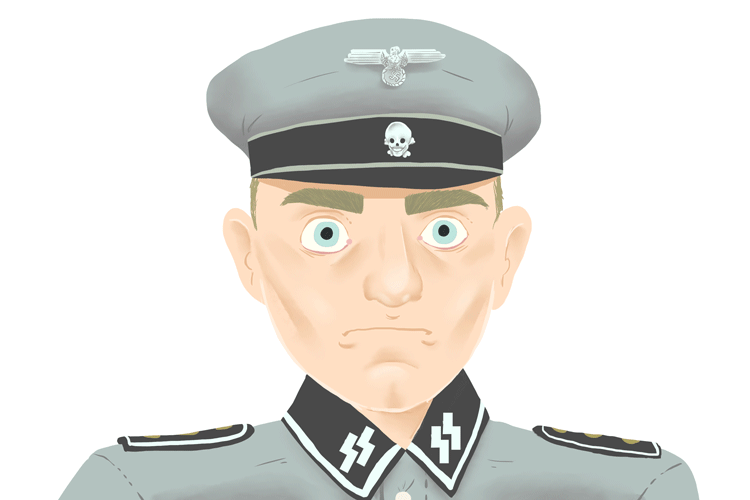Blitzkrieg – Swift, focused attack on an enemy using mobile forces including tanks, artillery and air support; German tactic called "Lightning War"
(Pronounced blitz-kreeg)

The German officer decided to have a blitz on creme eggs (blitzkrieg). He could make them disappear like lightning (lightning war).
Blitzkrieg is a military tactic intended to cause shock and disorientation to enemy forces due to surprise, speed and superior firepower.
The origins of blitzkrieg date back to the 19th century. The tactic was refined and repeatedly employed by the Nazis during World War II.
The idea of blitzkrieg is that victory comes through swift action.
Germany's initial success with the blitzkrieg tactic in the early stages of World War II depended on effective coordination of combined forces through radio communication.
The Germans would attack on a narrow front using tanks, dive-bombers and motorised artillery. Wide sweeps by armoured vehicles would follow, trapping and immobilising the opposing force.
The tactics were remarkably economical in terms of lives lost – primarily for the attackers, but also for those being attacked due to the short duration of the battle.
The Germans used blitzkrieg tactics successfully in their invasions of Belgium, the Netherlands and France in 1940. The same tactics were used by Erwin Rommel in the desert campaigns in North Africa.
Interesting fact: After the initial German successes of World War II based on blitzkrieg tactics, the Allies adopted this form of warfare, too. Germany ultimately found itself defeated by the same strategy had that secured its earlier triumphs.




